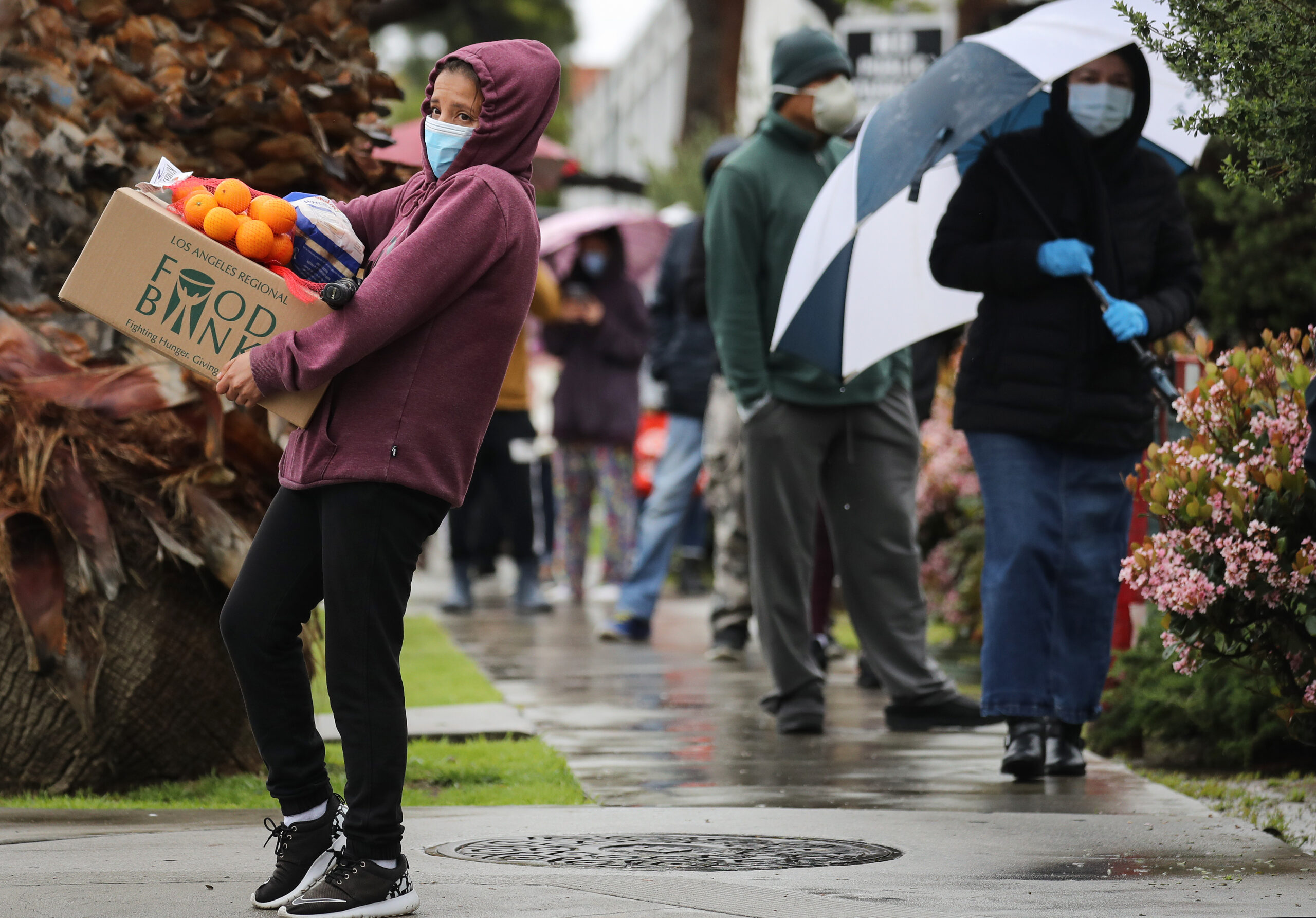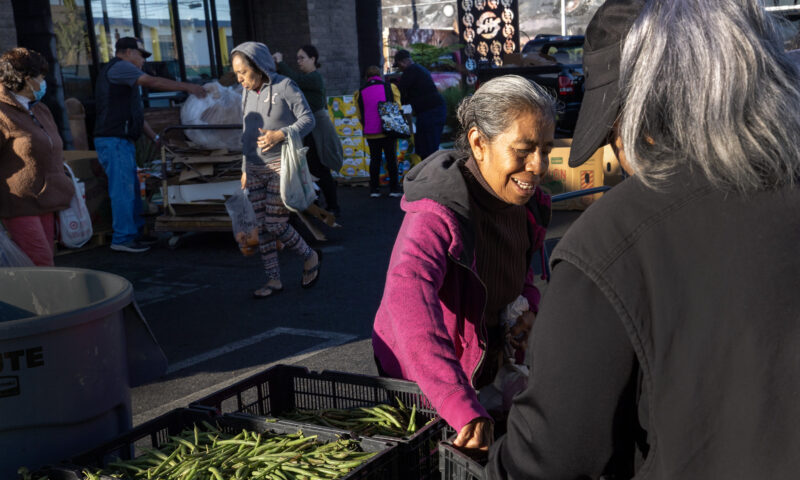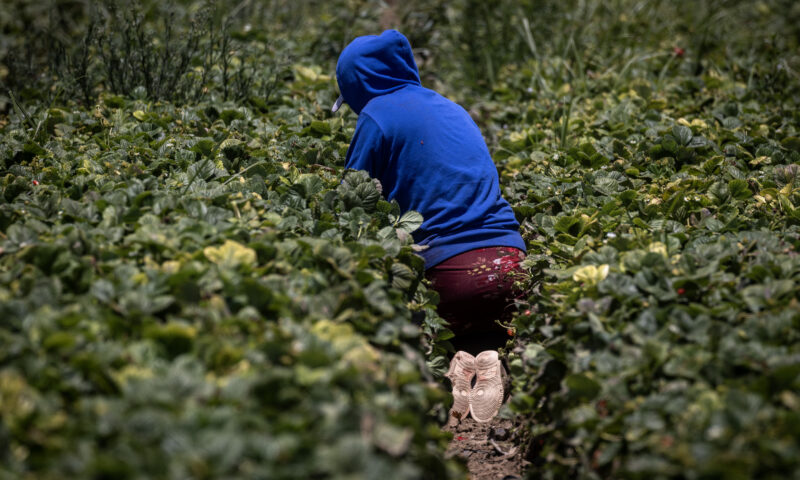Amid the ravages of the COVID-19 pandemic and its long, difficult aftermath, one bracingly simple truth about poverty in America was reaffirmed: The government can reduce it — if it wants to.
We know that because it happened. After the pandemic hit in early 2020, federal policies directed stimulus payments to households, enhanced and extended unemployment insurance, expanded both the Child Tax Credit and food and housing assistance programs, and made health care more accessible. As a result, the U.S. experienced a historic reduction in poverty rates, both overall and for children, despite a crisis that shuttered businesses and put millions out of work.
What happened after that?
Nothing — eventually.
No lesson was learned, or at least none that spurred a reconsideration of where federal tax dollars should be spent. Despite a push from President Joe Biden to extend it, the expanded Child Tax Credit expired in December of 2021, with no Republicans voting to renew. Legislators further allowed virtually all other federal anti-poverty enhancements to sunset, tying them to the supposed “end” of the COVID emergency. Poverty rates almost immediately began increasing back to prepandemic levels.
That’s where we are today, with poverty rates again on the rise. Now, the Donald Trump-led government is going after SNAP, the nation’s food assistance program, known in California as CalFresh — and it is doing so on a level that would place a crushing burden on states and almost certainly worsen the poverty outlook.
California’s poverty rates are trending inexorably up. According to a report published this month by the Public Policy Institute of California, that rate hit 16.9% in 2023, the latest year for which full data is available. That marks an increase over 2022 and is substantially higher than the 11.7% rate recorded in the fall of 2021, amid the federal pandemic relief programs.
By almost every accounting, the state’s poverty rates run higher than the national average. But the numbers are even more stark when they truly incorporate the cost of housing, which is why the California Poverty Measure, or CPM, matters so much. This tool, created by the Public Policy Institute of California and the Stanford Center on Poverty and Inequality, factors in the Golden State’s outsized housing costs. It also records what its creators call “necessary expenditures,” including child care and out of pocket health care costs, and it counts things like help from safety-net programs as part of a household’s financial resources.
Using those methods, researchers found that in 2023, about 6.4 million Californians were under the CPM poverty line: $43,990 a year in income and non-cash benefits for two working-age adults and two children.
For kids, meanwhile, the numbers were troubling. After dropping to 9.0% in the fall of 2021, the lowest level ever recorded in California, the poverty rate for children had almost doubled back to 17.6% by 2023 — precisely the same as it had been in 2019, before the pandemic.
As befits California’s size, diversity of population and job demographics and varying housing costs, the rates aren’t the same everywhere. They’re highest in Los Angeles County, the Central Coast and Orange County, with L.A. County at nearly 20%, according to the CPM. The lowest rates were recorded farther north, with the Sacramento area at 13%.
Sarah Bohn, a vice president at the Public Policy Institute of California and director of its Economic Policy Center, told Capital & Main the center can’t predict what poverty rates will look like in the near future. “We will get a glimpse,” she said, when 2024 estimates are released by the U.S. Census Bureau this fall — assuming they’re delivered on their traditional schedule.
One change, though, does not bode well. Bohn noted that one of the two pandemic-era programs that most effectively reduced poverty rates in California was the expansion of food assistance through CalFresh, which is federally funded. The policy institute estimated that CalFresh kept more than 400,000 California kids out of poverty.
That program is now under threat. As part of their “big beautiful” bill, Republicans in Congress voted to cut about $186 billion in SNAP funding over the next decade — this to a program that helps more than 42 million Americans each month afford groceries.
The Republican bill places a variety of new restrictions on the program. Among other things, it sets strict time limits on families to turn in paperwork, limits states’ ability to grant extension waivers in areas of high unemployment and freezes SNAP benefit levels regardless of future food price increases. Most significantly, it shifts billions of dollars in costs to the states themselves.
“These cuts will take food off the table of working parents, grandparents raising children, and veterans — at a time when many families are struggling to afford groceries and are already struggling to make ends meet,” the California Food Bank said after the bill’s passage. The nonprofit organization said it would continue to get free food to as many needy Californians as possible, “but these cuts create an immense gap that we simply cannot fill alone.”
The same can probably be said of the California Legislature, which is already grappling with a serious budget deficit. In criticizing the Trump administration’s move on SNAP, Gov. Gavin Newsom’s office estimated that at least 735,000 Californians would be in danger of losing their CalFresh benefits.
That is one more area in which the state is being asked to carry the financial load. It is one more area in which the state is likely to come up short. And it is one more way in which California’s poverty rate, already climbing as the federal government slashes the very programs that reduce it, will likely continue its dismal upward trend.
Capital & Main 2025


 Column - State of InequalityNovember 28, 2025
Column - State of InequalityNovember 28, 2025
 Latest NewsDecember 8, 2025
Latest NewsDecember 8, 2025
 Striking BackDecember 4, 2025
Striking BackDecember 4, 2025
 Latest NewsNovember 26, 2025
Latest NewsNovember 26, 2025
 The SlickDecember 2, 2025
The SlickDecember 2, 2025
 Latest NewsDecember 1, 2025
Latest NewsDecember 1, 2025
 Dirty MoneyDecember 3, 2025
Dirty MoneyDecember 3, 2025
 Child FarmworkersDecember 5, 2025
Child FarmworkersDecember 5, 2025

